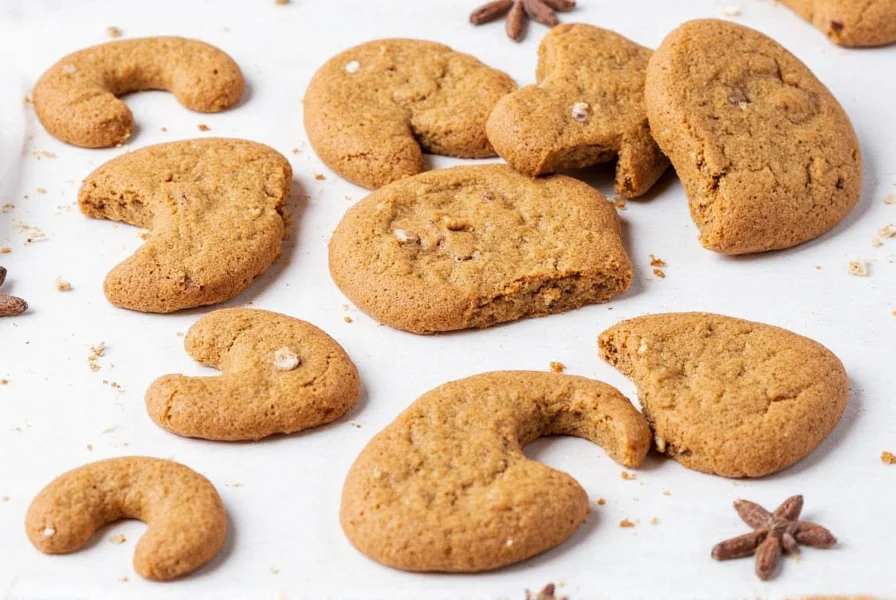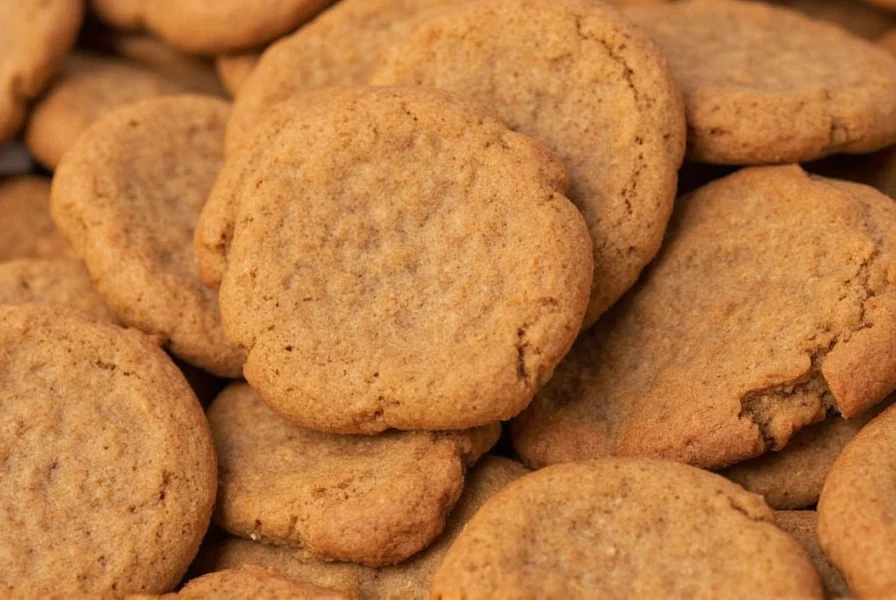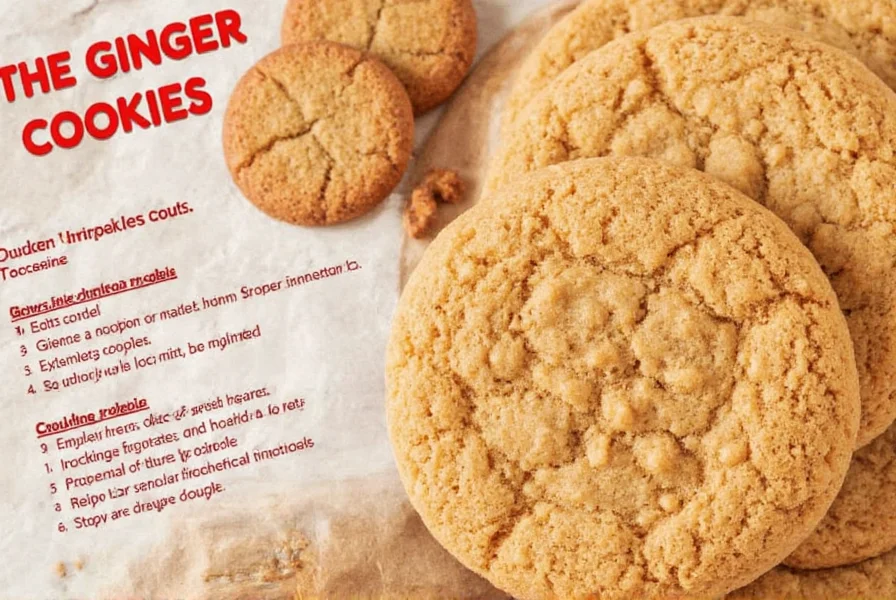Ginger cookies represent one of the oldest cookie varieties in Western baking tradition, with roots tracing back to 15th century Europe. These aromatic treats have maintained popularity through centuries due to their distinctive flavor profile and versatility in both texture and presentation. Unlike many modern cookie varieties, ginger cookies offer a complex spice balance that appeals to both children and adults.
A Brief History of Ginger Cookies
The story of ginger cookies begins with the spice trade routes that brought ginger from Asia to Europe. Initially a luxury item affordable only to the wealthy, ginger became more accessible by the Middle Ages. European bakers incorporated it into "gingerbread" - not the cake-like treat we know today, but rather a preserved form of ginger. By the 15th century, spiced cookies made with honey or molasses began appearing in German, Dutch, and English baking traditions.
Colonial Americans adapted these recipes using locally available ingredients, particularly molasses from the Caribbean sugar trade. The classic American soft ginger cookie emerged in the 19th century as baking soda became widely available, creating the chewy texture modern bakers recognize today. In contrast, Scandinavian countries developed their own crisp ginger thins, while British versions often feature a harder, more biscuit-like texture.

Essential Ingredients and Their Roles
The magic of perfect ginger cookies comes from the careful balance of ingredients. Each component serves a specific purpose in creating the ideal texture and flavor profile:
| Ingredient | Function | Substitution Options |
|---|---|---|
| Ground ginger | Primary spice flavor | Fresh ginger (use 3x amount) |
| Dark molasses | Provides deep flavor, moisture, and chewiness | Light molasses (less robust flavor) |
| Butter | Creates rich flavor and tender crumb | Coconut oil (for dairy-free) |
| Baking soda | Reacting with molasses acids for proper rise | Baking powder (less effective) |
Global Variations of Ginger Cookies
While the basic concept remains consistent, regional adaptations have created distinctive ginger cookie styles:
- American soft ginger cookies - Known for their chewy texture and pronounced molasses flavor, these typically include baking soda for lift and spread
- British ginger nuts - Hard, crunchy biscuits traditionally dipped in tea, with a higher spice-to-sugar ratio
- German Lebkuchen - Often made with honey rather than molasses, featuring additional nuts and citrus zest
- Swedish pepparkakor - Thin, crisp cookies with a complex spice blend beyond just ginger
- Gluten-free ginger cookies - Modern adaptations using alternative flours while maintaining authentic flavor
The Science Behind Perfect Ginger Cookies
Understanding the chemistry behind ginger cookie baking helps achieve consistent results. The reaction between baking soda and the acids in molasses creates carbon dioxide bubbles that give soft ginger cookies their characteristic spread and slight rise. This chemical reaction begins immediately when wet and dry ingredients combine, which is why chilling ginger cookie dough improves results - it slows the reaction until the cookies hit the oven's heat.
Temperature control proves critical for texture. Cookies baked at 350°F (175°C) typically develop the ideal balance of crisp edges and chewy center. Higher temperatures cause excessive spread before the structure sets, while lower temperatures can lead to dry, overcooked cookies. The moisture content from molasses continues to redistribute after baking, which is why ginger cookies often taste even better the following day.
Classic Soft Ginger Cookie Recipe
This time-tested recipe produces perfectly balanced soft ginger cookies with complex spice notes and ideal chewiness. The key to success lies in proper ingredient temperature and thorough chilling.
Ingredients
- 2 ¼ cups all-purpose flour
- 2 teaspoons ground ginger
- 1 ½ teaspoons cinnamon
- ¼ teaspoon cloves
- ¼ teaspoon nutmeg
- ½ teaspoon salt
- ½ teaspoon baking soda
- ½ cup unsalted butter, room temperature
- ½ cup granulated sugar
- ½ cup packed dark brown sugar
- ¼ cup molasses (not blackstrap)
- 1 large egg
Instructions
- Whisk dry ingredients (flour through baking soda) in medium bowl
- Cream butter and sugars until light and fluffy (about 3 minutes)
- Mix in molasses and egg until fully incorporated
- Gradually add dry ingredients, mixing just until combined
- Cover and refrigerate dough for at least 2 hours (overnight preferred)
- Preheat oven to 350°F (175°C) with racks in upper and lower thirds
- Roll tablespoon portions into balls, then roll in additional sugar
- Place 2 inches apart on parchment-lined baking sheets
- Bake 10-12 minutes until edges are set but centers remain soft
- Cool on baking sheet for 5 minutes before transferring to wire rack

Troubleshooting Common Ginger Cookie Issues
Even experienced bakers encounter challenges with ginger cookies. Here's how to address frequent problems:
- Flat, spread-out cookies: Usually indicates butter was too warm or insufficient flour. Chill dough longer and measure flour properly using the spoon-and-level method.
- Too hard or crisp: Often results from overbaking or using light molasses. Remove cookies when centers still look slightly underdone and use dark molasses for proper moisture.
- Insufficient spice flavor: Ginger loses potency over time. Use fresh spices and consider adding a pinch of black pepper to enhance ginger's warmth.
- Cracking on top: Normal for soft ginger cookies! These cracks develop as the exterior sets faster than the interior during baking.
- Inconsistent spread: Ensure uniform dough ball size and maintain consistent oven temperature with an oven thermometer.
Storage and Serving Recommendations
For optimal freshness, store cooled ginger cookies in an airtight container at room temperature. They typically maintain peak quality for 5-7 days. The molasses content causes these cookies to improve in flavor after 24 hours as the spices fully integrate.
Ginger cookies pair exceptionally well with:
- Cold milk or creamy beverages that balance the spice
- Strong black tea or coffee
- Vanilla ice cream for an impromptu dessert
- Cheese plates featuring sharp cheddar
For longer storage, freeze baked cookies between layers of parchment paper for up to three months. Thaw at room temperature for best texture.
Frequently Asked Questions
What makes a ginger cookie soft versus crisp?
The texture difference primarily comes from ingredient ratios and baking time. Soft ginger cookies contain more molasses and butter with less flour, and are removed from the oven when centers still appear slightly underdone. Crisp versions use less fat, more flour, and bake longer until fully set throughout.
Can I make ginger cookies without molasses?
While possible, omitting molasses significantly alters both flavor and texture. Molasses provides the characteristic deep sweetness and moisture that defines traditional ginger cookies. For acceptable substitutes, use ¼ cup honey plus 2 tablespoons maple syrup, though the flavor profile will differ. Blackstrap molasses creates an overly bitter taste and isn't recommended for standard recipes.
Why do my ginger cookies spread too much?
Excessive spreading usually occurs when butter is too warm, dough hasn't been properly chilled, or flour measurement is inaccurate. Ensure butter is at cool room temperature (not soft), chill dough for at least 2 hours, and measure flour using the spoon-and-level method rather than scooping directly from the bag.
How can I make my ginger cookies more flavorful?
For deeper flavor, use fresh spices (older spices lose potency), add a pinch of black pepper to enhance ginger's warmth, incorporate a small amount of freshly grated ginger, or let the dough rest in the refrigerator for 24-48 hours before baking. Using dark rather than light molasses also intensifies the characteristic flavor.
Are traditional ginger cookies gluten-free?
Traditional ginger cookies contain wheat flour and aren't gluten-free. However, you can create excellent gluten-free versions using a quality 1:1 gluten-free flour blend. For best results, add ½ teaspoon xanthan gum if your blend doesn't already contain it, and chill the dough thoroughly before baking to prevent excessive spreading.











 浙公网安备
33010002000092号
浙公网安备
33010002000092号 浙B2-20120091-4
浙B2-20120091-4